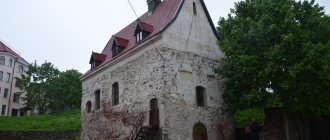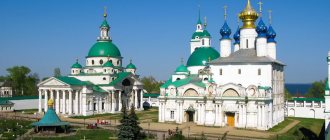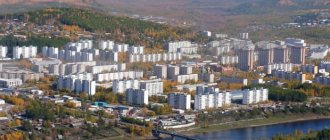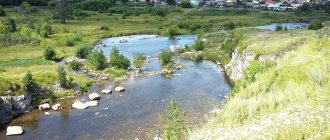City in Lipetsk region, Russia
| Lebedyan Lebedyan | |
| Town[1] | |
| Central Lebedyan | |
| Flag Coat of arms | |
| Location Lebedyan | |
| Lebedyan Location Lebedyan Show map of Russia Lebedyan Lebedyan (Lipetsk region) Show map of Lipetsk region | |
| Coordinates: 53°01′N 39°09'E / 53.017°N W. 39.150 ° E. / 53.017; 39.150Coordinates: 53°01′N 39°09'E / 53.017°N W. 39.150 ° E. / 53.017; 39.150 | |
| A country | Russia |
| Federal subject | Lipetsk region[1] |
| Administrative region | Lebedyansky district[1] |
| City of district subordination | Lebedyan[1] |
| Based | 1613 |
| City status from | 1779 |
| Height | 160 m (520 ft) |
| population (2010 Census)[2] | |
| • General | 21,012 |
| • Evaluate (2018)[3] | 19,288 (-8.2%) |
| Administrative status | |
| • Capital from | Lebedyansky district[1], Lebedyan city of district subordination[1] |
| Municipal status | |
| • Municipal district | Lebedyansky municipal district[4] |
| • Urban village | Urban settlement Lebedyan[4] |
| • Capital from | Lebedyansky municipal district[5], Lebedyan village[4] |
| Timezone | UTC + 3 (MSK [6]) |
| Postal code(s)[7] | 399610–399613, 399619 |
| OKTMO I WOULD | 42633101001 |
| Web site | Lebedyan.lipetsk.RU |
Lebedyan
(Russian: Lebedyan) is a town and the administrative center of Lebedyansky District in Lipetsk Oblast, Russia, located on the upper Don River, 62 km (39 mi) northwest of Lipetsk, the administrative center of the region. Population: 21,012 (2010 Census);[2]22,966 (2002 Census);[8]22,850 (1989 Census).[9]
Story
Founded in 1613 mainly to protect the possessions of I. N. Romanov, the Tsar's uncle, and served as a border outpost protecting southern Russia from Crimean Tatar invasions. [ citation needed
] Trinity Monastery was founded in 1621, and by the end of the century several churches had been built; now they are all in ruins.
Chartered in 1779[ citation needed
] Lebedyan developed in the 19th century as a center for horse racing and horse breeding. Local residents claim that the first hippodrome in Russia was opened here in 1826. The Lebedyansky Agricultural Society, founded in 1847, had a great influence on the preparation for the emancipation of 1861.
Lebedyan in the 18th century
In the era of Peter the Great, the city entered as a trade and craft Posad, while still retaining the functions of a military service city. Finding herself on the way from Moscow to Voronezh, where the construction of the Russian fleet was underway, Lebedyan was involved in the turbulent events of that period. The Lebedyans took part in the Azov campaigns: they built plows and, as part of Sheremetyev’s auxiliary army, stormed fortified Turkish towns and the mouth of the Dnieper, reaching Ochakovo.
The Streletsky uprising of 1698 also left its mark on the history of the city. After the defeat of the Streltsy, more than fifty exiles were sent to Lebedyan. These were former archers from Chernov's regiment. Some of them were executed here.
In 1703, the wooden fort burned down and was never built again. And although during the days of the Bulavinsky uprising of 1708 Lebedyan was one of the points of concentration of government troops, the military and defensive life of the city ended.
The city becomes the center of commercial, industrial and cultural life of the region, ranking on a par with the largest trading cities in Russia. The development of the local fair culture was greatly facilitated by its favorable location: at the junction of the provinces of Tambov, Voronezh, Ryazan, Oryol and Tula.
The growth of prosperity could not but affect the growth of the city. It is likely that the remains of the earthworks were hidden at the turn of the century. The territory of the city fortress began to be built up with philistine houses.
In 1788, a new general plan for Lebedyan was drawn up, which envisaged replacing the previous chaotic development with a regular layout with a clear breakdown into blocks. Large-scale transformations in accordance with the approved plan became possible after the approval of the general plan in St. Petersburg in 1806. And especially after the big fire in the summer of 1813, which destroyed almost the entire center of Lebedyan.
XX century
Lebedyan began to emerge from economic stagnation at the turn of the 19th-20th centuries. At the beginning of the century, there were 2 tanneries and two soap factories, a distillery, a candle and tallow factory and several pottery workshops in the city. The main income of the Lebedyan residents came from grain trade.
In 1906, city public transport was provided by cab drivers, the demand for which increased markedly with the construction of a railway station remote from the city.
The increased income of the city again made it possible to begin its improvement. At this time, a new reinforced concrete bridge was built across the Don, along with two artesian wells for water supply.
Notes
- ↑ 123
www.gks.ru/free_doc/doc_2016/bul_dr/mun_obr2016.rar Population of the Russian Federation by municipalities as of January 1, 2016 - According to historian P.N. Chermensky and a number of others, the city could have been founded at the end of the 16th century, but not earlier than 1592.
- Lebedyan // Encyclopedic Dictionary of Brockhaus and Efron: in 86 volumes (82 volumes and 4 additional). - St. Petersburg, 1890-1907.
- ↑ 12
[guides.rusarchives.ru/browse/guidebook.html?bid=128&sid=37525 State Archives of the Oryol Region. Certificate of administrative-territorial division] - THE USSR. Administrative-territorial division of the union republics on January 1, 1980 / Compiled by V. A. Dudarev, N. A. Evseeva. - M.: Publishing house "Izvestia of the Soviets of People's Deputies of the USSR", 1980. - 702 p. — P. 165.
- ↑ 12
[guides.rusarchives.ru/browse/guidebook.html?bid=308&sid=1081625 State Archive of the Tambov Region. Certificate of changes in the administrative-territorial division of the Tambov region] - Agricultural societies // Encyclopedic Dictionary of Brockhaus and Efron: in 86 volumes (82 volumes and 4 additional). - St. Petersburg, 1890-1907.
- The Great October Socialist Revolution: encyclopedia. 3rd ed. - M.: Sov. encyclopedia, 1987. - 639 p. — P. 512.
- Civil war and military intervention in the USSR: encyclopedia. 2nd ed. / Ch. ed. S. S. Khromov. - M.: Sov. encyclopedia, 1987. - 720 p. - pp. 346-347.
- ↑ 12
[xn--90agbb1aq9hwa.xn--p1ai/index.php/%D0%98%D1%81%D1%82%D0%BE%D1%80%D0%B8%D1%8F_%D0%9B%D0% B5%D0%B1%D0%B5%D0%B4%D1%8F%D0%BD%D1%81%D0%BA%D0%BE%D0%B3%D0%BE_%D0%BA%D1%80% D0%B0%D1%8F Lebedyanskaya Encyclopedia. History of Lebedyansky region] - ↑ 123456789101112
[www.MojGorod.ru/lipeck_obl/lebedjanj/index.html People's encyclopedia “My City”. Lebedyan]. Retrieved June 13, 2014. [www.webcitation.org/6QIykV8Ml Archived from the original on June 13, 2014]. - [demoscope.ru/weekly/ssp/rus59_reg2.php All-Union Population Census of 1959. The size of the urban population of the RSFSR, its territorial units, urban settlements and urban areas by gender] (Russian). Demoscope Weekly. Retrieved September 25, 2013. [www.webcitation.org/6GDOghWC9 Archived from the original on April 28, 2013].
- [demoscope.ru/weekly/ssp/rus70_reg2.php All-Union Population Census of 1970 The size of the urban population of the RSFSR, its territorial units, urban settlements and urban areas by gender.] (Russian). Demoscope Weekly. Retrieved September 25, 2013. [www.webcitation.org/6GDOiMstp Archived from the original on April 28, 2013].
- [demoscope.ru/weekly/ssp/rus79_reg2.php All-Union Population Census of 1979 The size of the urban population of the RSFSR, its territorial units, urban settlements and urban areas by gender.] (Russian). Demoscope Weekly. Retrieved September 25, 2013. [www.webcitation.org/6GDOjhZ5L Archived from the original on April 28, 2013].
- [demoscope.ru/weekly/ssp/rus89_reg2.php All-Union Population Census of 1989. Urban population]. [www.webcitation.org/617x0o0Pa Archived from the original on August 22, 2011].
- [www.perepis2002.ru/ct/doc/1_TOM_01_04.xls All-Russian Population Census 2002. Volume. 1, table 4. Population of Russia, federal districts, constituent entities of the Russian Federation, districts, urban settlements, rural settlements - regional centers and rural settlements with a population of 3 thousand or more]. [www.webcitation.org/65AdCU0q3 Archived from the original on February 3, 2012].
- [www.gks.ru/bgd/regl/B09_109/IssWWW.exe/Stg/d01/tabl-21-09.xls Number of permanent population of the Russian Federation by cities, urban-type settlements and districts as of January 1, 2009]. Retrieved January 2, 2014. [www.webcitation.org/6MJmu0z1u Archived from the original on January 2, 2014].
- [lipstat.gks.ru/wps/wcm/connect/rosstat_ts/lipstat/resources/d81ba08041487d4b814de7367ccd0f13/VPN2010_Number+and+placement+of population.pdf All-Russian Population Census 2010. Number and distribution of the population of the Lipetsk region]. Lipetskstat. Retrieved November 7, 2013. [www.webcitation.org/6Kwk9BYKw Archived from the original on November 7, 2013].
- www.gks.ru/dbscripts/munst/munst42/DBInet.cgi?pl=8112027 Lipetsk region. Estimated resident population as of January 1, 2009-2016
- [www.gks.ru/free_doc/doc_2012/bul_dr/mun_obr2012.rar Population of the Russian Federation by municipalities. Table 35. Estimated resident population as of January 1, 2012]. Retrieved May 31, 2014. [www.webcitation.org/6PyOWbdMc Archived from the original on May 31, 2014].
- [www.gks.ru/free_doc/doc_2013/bul_dr/mun_obr2013.rar Population of the Russian Federation by municipalities as of January 1, 2013. - M.: Federal State Statistics Service Rosstat, 2013. - 528 p. (Table 33. Population of urban districts, municipal districts, urban and rural settlements, urban settlements, rural settlements)]. Retrieved November 16, 2013. [www.webcitation.org/6LAdCWSxH Archived from the original on November 16, 2013].
- [www.gks.ru/free_doc/doc_2014/bul_dr/mun_obr2014.rar Table 33. Population of the Russian Federation by municipalities as of January 1, 2014]. Retrieved August 2, 2014. [www.webcitation.org/6RWqP50QK Archived from the original on August 2, 2014].
- [www.gks.ru/free_doc/doc_2015/bul_dr/mun_obr2015.rar Population of the Russian Federation by municipalities as of January 1, 2015]. Retrieved August 6, 2015. [www.webcitation.org/6aaNzOlFO Archived from the original on August 6, 2015].
- [rustemple.narod.ru/lp_lebedyan_staro_kazanskaya.html Temples of the Central Black Earth Region]
- ↑ 1234
[www.5-tv.ru/news/21738/ A pensioner-enthusiast is digging a subway in his native village.] // Channel 5. - Kononov N.
[www.inauka.ru/curioz/article30876.html Metropolitan named after Mulyarchik] // News of science - [www.businesspress.ru/newspaper/article_mId_43_aId_130853.html A pensioner from the regional center of the Lipetsk region is building a metro and creating his own civilization] // Business press
. No. 40. 10.23.2002 - Mikheev G.
Metro to the porch of your beloved //
Parliamentary newspaper
. 27.10.2000.
Lebedyan today
Today the city is home to more than 20 thousand residents. There are three secondary educational schools, 7 kindergartens, a preschool correctional orphanage, two music schools, a children's and youth center, and a sports school.
Despite the industrial development and housing construction of the last hundred years, Lebedyan still retains the attractive features that appeared in the 19th century. In the central part, the city remains classic merchant and provincial, its architecture is in harmony with the environment and creates a feeling of comfort.
Famous people
- Lebedyan is the birthplace of the railway builder P. G. von Derviz; pianist, professor of the Moscow Conservatory K. N. Igumnov; doctor and historian of zemstvo medicine S. N. Igumnov; artist, secretary of L. N. Tolstoy - Yu. I. Igumnova; professor, Soviet art critic N. Kozhin; Soviet inventor, designer of filming equipment V. D. Konstantinov; artist of the 2nd avant-garde V. Ya. Sitnikov; international journalist, artist N. Sitnikov; world-famous epidemiologist A. A. Churilina; poets and writers T.V. Churilin, E.I. Zamyatin, A.I. Levitov; Honored Artist of the BSSR B.V. Nikolsky; professor, founder of higher conducting choral education N.V. Romanovsky; academician, mechanical scientist E. A. Mikrin; sculptor, member of the Union of Artists V. I. Morozova.
- The noble family of the Altufevs came from Lebedyan.
- In 1938, Mikhail Bulgakov lived here in his dacha.
- Andrei Bely lived here in 1932.
- In 1931-1932, they served exile here: M. A. Scriabin, daughter of composer A. N. Scriabin
- Kezelman, Elena Nikolaevna (1889–1945) - prose writer and memoirist.
Soviet time
Since 1928, Lebedyan has become the center of the region, part of the Yeletsk district, first of the Central Black Earth, then of the Voronezh, and then of the Ryazan region. Since January 1954, the city has been part of the newly formed Lipetsk region.
Factories are being built, streets are being improved. Instead of paving stones, asphalt pavement is laid. In July 1950, a water supply system started operating in Lebedyan, built by local residents using the “people’s construction” method. This first branch, stretching along the odd side of the central Sovetskaya Street from the upper water pump on the edge of the former Fair Square, gave the townspeople free drinking water.
LiveInternetLiveInternet
On the green hills of the Don the churches are tall,
Here stands an ancient city near the holy river. The golden domes are directed towards the sky,
Dressed up in a necklace of poplar crowns.
Coat of arms of the city of Lebedyan
Bird's eye view of the city.
Lebedyan is a small town in the Lipetsk region, located on the Don River, 53 kilometers from the regional center. The area of the settlement is 18 square kilometers with a population of 19,203 people.
The first mention of the Lebedyan settlement dates back to 1605. In 1613, the settlement received the status of a sovereign city. Archaeological finds on Tyapkina Mountain - the site of the construction of the Lebedyanskaya fortress - allow us to assert the existence of a Slavic settlement here back in the 8th-10th and 12th-13th centuries1. And legends also speak of an older age of the city than is generally believed, dating the construction of the first fortifications to the 14th century. Lebedyan, together with neighboring Yelets and Dankov, was not only a border city of the Ryazan principality and the border of the Russian state, but also a place through which the trade route to the states of the Black Sea coast passed. The first surviving written mention of Lebedyan dates back to the beginning of the 17th century. It is known that Lebedyan or the village of Lebedyanskoye fortified settlement existed in 1605 and belonged to the Moscow nobleman Nikita Dmitrievich Velyaminov as an estate. It cannot be ruled out that this estate appeared at the end of the 16th century under the Russian tsars: Fyodor Ivanovich or Boris Godunov. During the Time of Troubles, the Lebedyan settlement passed from hand to hand. Only after October 1612 did Lebedyan cease to be a proprietary settlement. Tatar parishes from beyond Voronezhi to the Don revealed the need to build a new city between Dankov and Yelets. The fortified Lebedyansky fort was the best suited for this task. A military garrison consisting of archers and Cossacks was sent here, who began to equip the fortress. There was little time allotted for this. In the spring of 1613, a detachment of Gultyaev-Cossacks led by Ivan Zarutsky arrived under the city walls. Departing from Moscow, the rebellious ataman tried to take possession of Livny, but, not taking the city, retreated to Lebedyan. At the same time, governor Ivan Odoevsky was sent from the capital, reporting to Moscow that Zarutsky “stands on Lebedyan and hunts over him.” Having united with other forces that approached, Odoevsky forced the Cossack chieftain to leave Lebedyan. In 1613/14, Lebedyan received its first governor, Lavrenty Aleksandrovich Kologrivov, and became a city. Having arisen on the basis of the southern lands of the Dankovsky district, Lebedyan between 1616 and 1618/19 received the lands of the Ryazhsky district on the river. Voronezh. In 1615, Nikita Somov became governor.
In 1662, the city fortress was reconstructed, and the territory of the city increased significantly. In 1703, the Lebedyan fortress burned down in a fire and was never restored.
According to legend, in 1621, a mile from the city, in the Yablonovaya glade of the Romantsov forest, by order of Patriarch Filaret, former boyar Fyodor Nikitich Romanov, the Holy Trinity Monastery was founded. Surrounded by a high stone wall with loopholes, the monastery was an almost impregnable fortress.
In 1662, the Lebedyanskaya fortress was once again rebuilt: the city and the large fort were united into one fortification. Lebedyan is expanding and beautifying. Trade is developing here and the area is growing.
In 1719, the city was included in the Yelets province of the Azov province, which after a while was renamed the Voronezh province.
In the fall of 1779, by decree of Empress Catherine II, Lebedyan was transformed into a district town of the Lebedyansky district of the Tambov governorship.
In the first half of the 19th century, the first hippodrome in Russia, a racing society, and an agricultural society were opened in Lebedyan.
In the 19th century, Lebedyan was famous for its horse fairs, and in 1826, the first hippodrome in Russia was opened in the city and the Lebedyan Racing Society was founded, whose members included prominent horse breeders from all over Russia. In 1847, the Lebedyansky Society of Agriculture was established in the city, which left a deep mark on the history of agronomic science in the country and became the cradle of the main reform projects of 1861.
In 1892, a railway was built through the city, which helped slow down the development of Lebedyan.
At the beginning of the 20th century, a reinforced concrete bridge was built across the Don, the central Dvoryanskaya Street was improved, and two artesian wells were drilled.
The State Bridge photographed immediately after its construction in the beginning. XX century
Modern view of the bridge. The 160-meter reinforced concrete bridge was built in 1910.
At the beginning of 1918, Soviet power was proclaimed in the city. In 1924, by decree of the country's authorities, the city was included in the Lipetsk district.
On August 28, 1919, Lebedyan was taken by the cavalry of the 4th Don Corps of Lieutenant General K.K. Mamontov, who, however, did not stay in the city.
On February 11, 1924, by resolution of the All-Russian Central Executive Committee, Lebedyansky district was abolished, and Lebedyan became part of Lipetsk district.
On July 30, 1928, in connection with the abolition of the division into provinces and districts, Lebedyan became the center of the newly formed Lebedyansky district, which became part of the Yeletsky district of the Central Chernozem region (on July 23, 1930, the division of the Central Black Earth region into districts was abolished).
After the disintegration of the Central Black Earth Region on June 13, 1934, Lebedyan, together with the region, became part of the Voronezh Region, and on September 26, 1937, into the newly formed Ryazan Region. After the formation of the Lipetsk region on January 6, 1954, Lebedyan and Lebedyansky district were included in its composition.
In April 2022, there was a flood from a cannery containing thousands of liters of finished juice.
There are several engineering and food processing enterprises in the city, including the largest in Russia.
The writer Mikhail Bulgakov and the poet Andrei Bely lived in Lebedyan for some time. The city inspired the work of L. N. Tolstoy, I. S. Turgenev, I. A. Bunin, M. M. Prishvin, and mention of it can be found in their works.
The ancient central part of the city.
Novo-Kazan Cathedral. Years of construction: 1828-1836 - cathedral, 1835-1851 - bell tower. Architect N.V. Uryupin. The cathedral was erected at the expense of parishioners with significant participation of Lebedyan merchants Stepan Ivanovich (1774-1833) and Ivan Ivanovich (1776-1855) Igumnovs. The bell tower of the temple is 60 meters.
Urban development of the 19th century.
Old photo postcard from the late 19th century
Troyekurovsky St. Demetrius Illarionovsky Monastery. Diocesan convent of the Yelets and Lebedyansk diocese of the Russian Orthodox Church (Moscow Patriarchate). During Soviet times, the monastery was closed and the buildings were used for local economic needs. In 1997, the monastery began its revival.
House of merchant A.P. Neronov, first half of the 19th century
The surname “Neronov” refers to the old Lebedyan families, whose representatives are found in documents of the 17th century. During the heyday of Lebedyan as a trading center, the Neronovs became merchants. In the 19th century, they owned shops, taverns, and houses, some of which have survived to this day. However, over time, their place as successful merchants was taken by other more fortunate and successful Lebedyans. Before the revolution, the Neronovs were no longer as rich and famous as their ancestors, and the events of 1917 completely scattered representatives of this large family across the country. The descendants of the Lebedyan Neronovs took root in Kostroma, St. Petersburg, Vladimir, and Krasnogorsk.
City prison building. After the Decembrist uprising, the changed political situation required the reconstruction of the prison castle. In 1830, a two-story building and three outbuildings were reconstructed on Naberezhnaya Square, on the steep right bank of the Don, and a fence wall was built. A house church was consecrated especially for prisoners. By the way, financing the prison was a mandatory expense item for the city government. 6 kopecks per day were allocated for the maintenance of prisoners. All prisoners (in 1879, 14 men and 6 women were kept here in relatively normal human conditions), except those in the prison hospital, were involved in household work. “The warden of the prison earned, according to the report of the Tambov provincial engineer, the gratitude of the provincial authorities with his thoughtfulness.” The Lebedyansky prison department was headed by the district marshal of the nobility.
An old post office building. Built in 1831 as a communications house.
The Igumnov House today.
Now in this building there is a Cultural, Educational and Leisure Center
Near the facade of the main mansion house there is a bust, one might think that one of the historical inhabitants is immortalized, but this is not the case. This is a bust of F. Engels. This fact is explained by the fact that during the Soviet period, the building at different times housed the executive committee, the district executive committee, the city executive committee, and the editorial office of the newspaper “The Path of October,” renamed “Lebedyanskiye Vesti.”
House of the Igumnov merchants, 19th century.
Shopping arcades built in the 19th century
The idea to build a new complex of shops along the perimeter of the Trade Square arose from Lebedyan back in the 30s of the 19th century. However, the implementation of the plan began only in the 1870s - after the majestic New Kazan Cathedral was erected in the center of the square. Four identical brick buildings were built, consisting of modules of identical architecture - cells of retail shops. The shopping arcades serve the city to this day. Since 2014, the complex has been restored and is gradually regaining its original appearance.
The house of the merchant N.A. Proskurin. Since 1885, the city bought this house for 10,000 rubles for a zemstvo hospital with 40 beds.
This is what the hospital building looked like at the end of the 19th century
House of the Fudelman merchants.
During Soviet times, the house was given over to communal apartments. The ground floor housed workshops and the library of the nearby secondary school No. 2. Of undoubted interest is the brick entrance arch standing to the right of I.I.’s house. Fudelman. This is one of the few surviving elements of the design of the city estate, which, unfortunately, is almost completely lost at present.
Manor house on Bolshaya Dvoryanskaya. Now a children's and youth center. Built in the mid-19th century
Tyapkina Mountain - 50 hectares of exposed Devonian limestone, rising 30-35 meters
According to one legend, the Cossack robber Tyapka lived on the mountain, who robbed ships sailing past along the Don. Hence the strange name of this mountain.
Now about the unusually beautiful name of the city. According to an old legend, Swan Lake was the name of the area around the Great Swan Lake, where proud white swans nested. Swans often took off from the water and circled beautifully over the city's wooden houses and church tops for a long time, delighting the residents with their perfect, mesmerizing flight. But one day, flapping their snow-white wings, the proud birds flew away forever...
Located in the former Pushkarskaya settlement of Lebedyan at the foot of Tyapkina Mountain, the Church of the Nativity of the Virgin Mary is sometimes called “Podgorodnya” or “Podgorenskaya”. The temple is of significant interest as an architectural monument in the “Moscow Baroque” style, and is the oldest temple in Lebedyan, excluding the monastery churches of the Trinity Monastery. Already at the end of the 19th - beginning of the 20th centuries. in Lebedyan itself, no one remembered the time of construction of the Nativity of the Theotokos Church, and city residents referred to a legend according to which the church existed for more than 300 years.
St. Nicholas Church in Pokrovo-Cossack Sloboda. Construction 1825-1831
Spaso-Preobrazhensky Church in the old cemetery, built in 1812.
There are two Kazan cathedrals in Lebedyan. This one, built in the 1770s, is called Starokazansky.
A hundred years ago, this building was crowned with a fire tower with a platform for observing the city and a high spire (not preserved). The fire brigade, consisting of 12 workers led by a fire chief, was maintained by the city and was located here: in the courtyard of the council building there were sheds with firefighting equipment. In the building itself, meetings of the city council were held, and the city government, consisting of the head, his two deputies and a secretary, worked. Despite the fact that they dealt with approximately the same issues of urban management as their current colleagues, even with such a small staff they coped with their responsibilities.
Lebedyansk secondary school No. 4 The building of the women's gymnasium in 1902. Pedestrian street Mira is one of the oldest streets in Lebedyan. In the past, for more than 100 years, it was the Nativity of Christ, and was called so in honor of the temple that stood at the beginning of the street on the steep Donskoy bank. The temple was destroyed in 1949. A monument to V.I. was erected on the site of the temple. Lenin, the street was renamed. For almost 40 years it bore the name Military, and now it is Peace Street. Lebedyansky streets are long. Some of them are stretched along the Don, others depart from it, crossing the first at a right angle. It is simply impossible to get lost in the town. In addition, what is noteworthy is that on the corner buildings of the streets there are signs with their names and house numbers. And not only that, they indicate both street names - modern and old.
Ancient merchant shops, early 19th century. XX century.
Museum of Local Lore
Monument to I.S. Turgenev and his story “The Swan”
Konstantin Nikolaevich Igumnov (1873 - 1948) - Russian and Soviet pianist and teacher lived here. People's Artist of the USSR (1946).
Monument to Igumnov, winner of the Stalin Prize of the first degree.
House-Museum of E. I. Zamyatin. Evgeny Ivanovich Zamyatin (1884 – 1937), classic of modern Russian literature, theorist of writing. Zamyatin’s house is actually considered to be the house of his maternal grandfather, priest Alexander Platonov.
At the entrance to the city, under Tyapkina Gora, there is an obelisk in honor of those killed during the Second World War.
Monument to fallen soldiers - internationalists in Afghanistan.
Monument to Chernobyl victims Soviet period
On the embankment
Sports complex
" Apple land , berry paradise ." It is no coincidence that Lebedyan is called the apple capital of Russia! Lebedyansky region has long been famous as the greenest “oasis” on the map of the region for its significant harvests of garden fruits.
City market.
Canning factory
Guardian Angel of the City
The Guardian Angel Stele was installed on September 7, 2012, in honor of the 400th anniversary of the city. In the center of the sculpture are the words: “Lord, save this city and its inhabitants.” A three-meter figure of a celestial being - a winged youth - was installed on the circular traffic area at the intersection of three streets - Lenin, M. Gorky and 60 Let Oktyabrya.
Arch of Happiness
Educational institutions in Lebedyan begin their chronology in the second half of the eighteenth century, when Saint Tikhon of Zadonsk was the bishop of Voronezh. He not only stood at the origins of education in Lebedyansky district, but also developed a teaching methodology, the principles of which are still relevant today.
Men's gymnasium, where Zamyatin and Igumnov studied.
There were educational institutions in the city - the “Slovenian” school since 1764, the National School since 1787, the District School since 1828, the Parish School since 1828, the First Private School . The first educational institution for girls in the city was a private school with the rights of a parish school, which was maintained by Mrs. Muravyova. At first the school was located in the city of Kozlov, and then in 1854 its owner moved to Lebedyan and organized an educational institution here. Until that time, the townspeople, who did not have the means to send their daughters to study in other cities, limited themselves to home education, often teaching them only reading and writing. With the advent of Mrs. Muravyova’s school in the city, which taught the Law of God, arithmetic, reading, calligraphy, French and German, music, dancing and handicrafts, the daughters of nobles, clergy and some wealthy townspeople could already receive a good education. However, apparently, this school in Lebedyan did not last long.
Men's pro-gymnasium since 1871, and since 1902 Women's pro-gymnasium.
Thus, by 1913, in Lebedyan there were men's and women's gymnasiums, a city four-year school, women's and men's parish schools, parochial schools at city churches and a monastery, as well as zemstvo schools in Streletskaya, Podmonastyrnaya, Kuznetskaya, Pokrovskaya and Pushkar-Zadonskaya settlements. At that time, 16,000 people lived in the city .
Source 1 Source 2 Source 3









